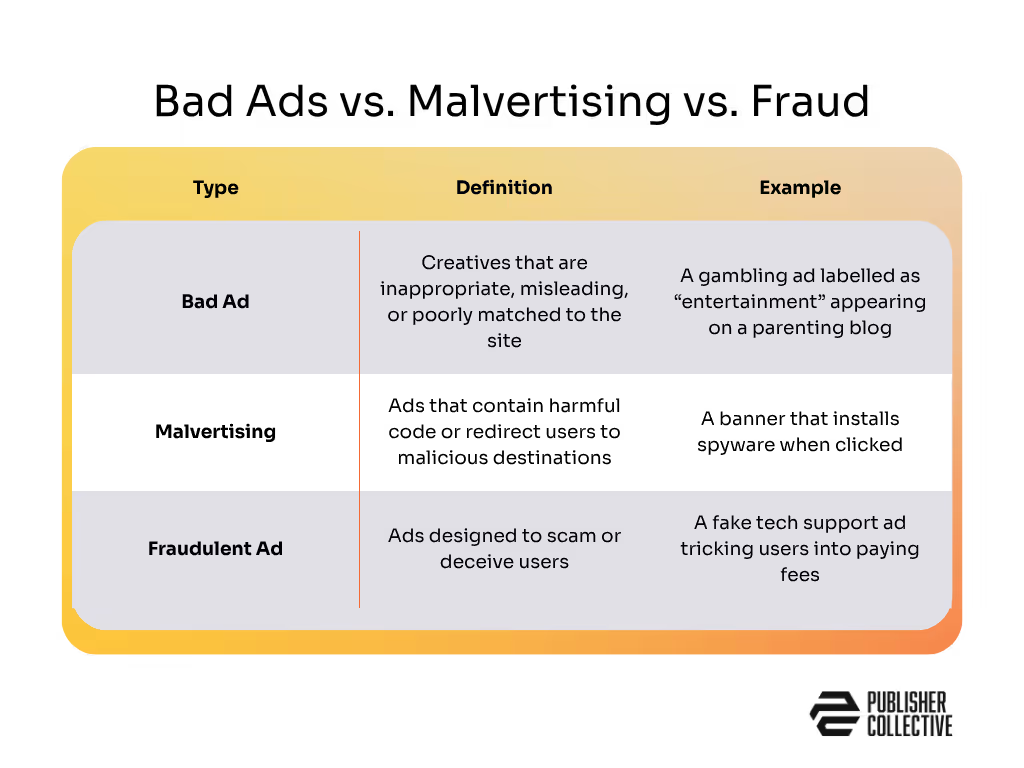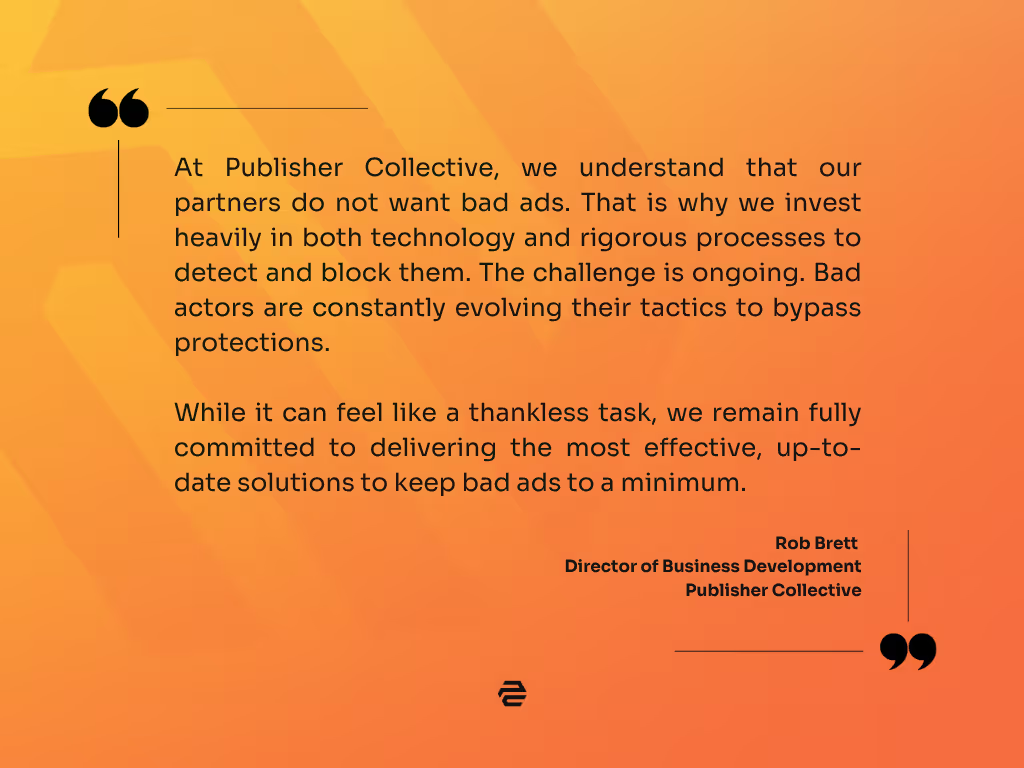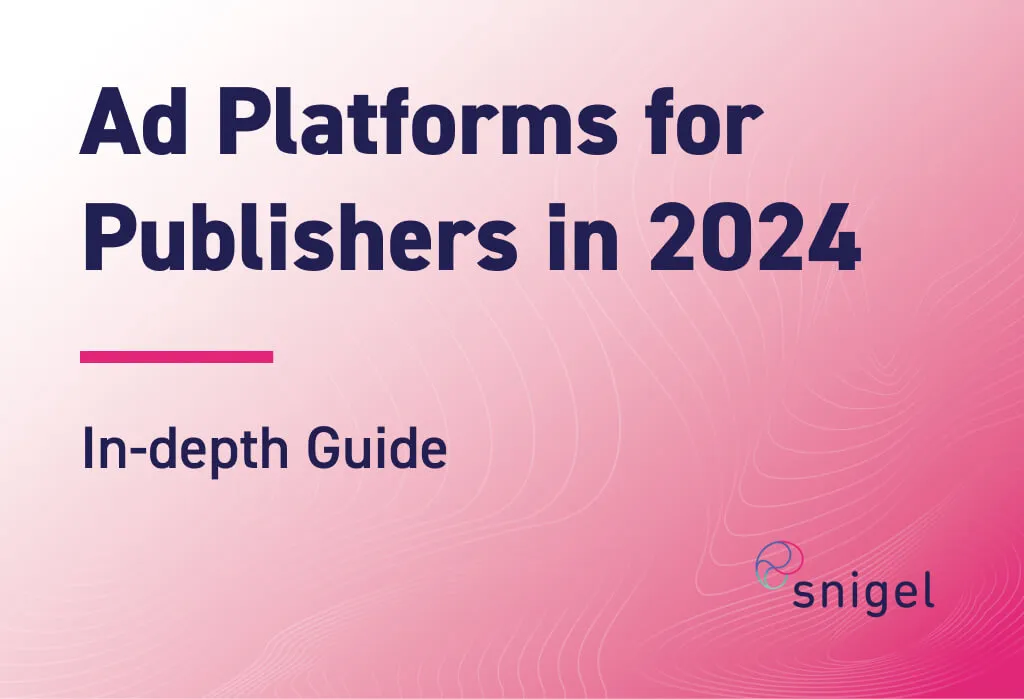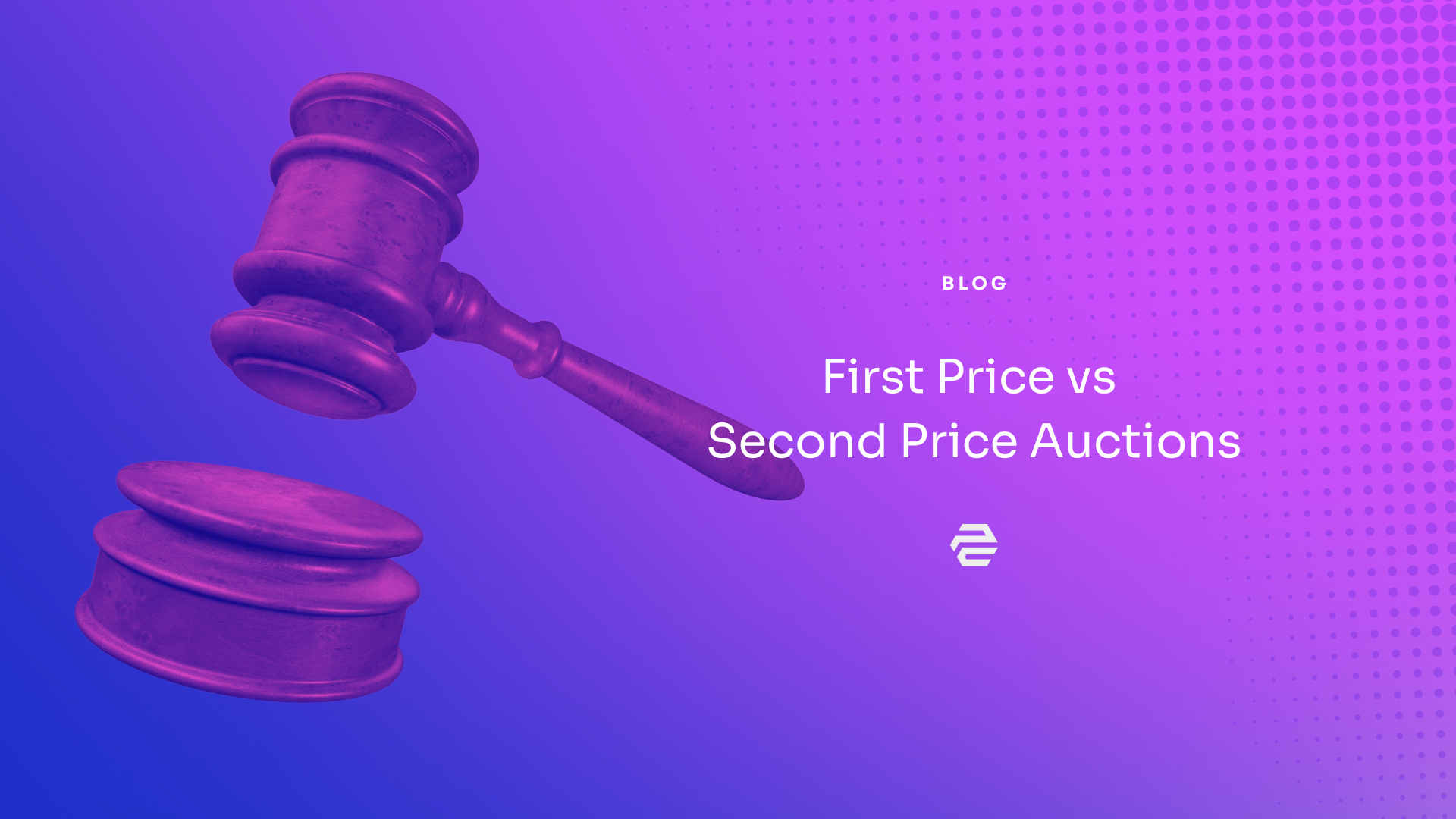Bad Ads in Programmatic Advertising: What Publishers Should Know

Every so often, someone in our network pings us with a screenshot. It’s usually something like a garish gambling ad sitting next to a character guide, or an off-brand product placement that clashes with the rest of the content. Not malicious, not fraudulent. Just… off.We’ve always taken ad quality seriously. We tailor filters, respond quickly to reports, and work closely with partners to limit the chances of a mismatch. Lately though, we’ve seen more edge cases slipping through, and we know how frustrating that can be.This post breaks down why that happens, what we mean by "bad ads," and how we’re continuing to improve the way we manage them across the network.
What Counts as a Bad Ad?
The term “bad ad” gets thrown around a lot, but in the world of programmatic advertising, it has a pretty specific meaning. We’re not talking about malware or obvious scams, we’re talking about ads that don’t belong on your site.We consider an ad “bad” when it does one or more of the following:
- Is inappropriate for your audience (like gambling, adult content, or sensational clickbait)
- Misrepresents what it’s offering, often through exaggerated language or imagery
- Feels out of sync with your site’s tone, structure, or community expectations (even if it’s technically allowed)
These ads often appear legitimate at first glance. The issue is in how they’re labelled, where they’re shown, and how well they match your content and audience.
Where Bad Ads Fit in the Bigger Picture
Bad ads aren’t the only ad quality issue publishers face. Here’s how we think about the differences:

They’re not designed to cause harm, but they still disrupt the experience. That matters. One mismatched ad can lead to user complaints, shorter visits, or reduced trust. And when trust drops, ad blockers usually follow.
Why Bad Ads Appear in the First Place
With so many checks, filters, and rules in place, it’s fair to ask — how are bad ads still getting through?The truth is that programmatic systems rely heavily on automation, and not every part of the supply chain is equally strict.Here are a few common reasons we see bad ads appear:
1. Mislabelled Categories
Advertisers want access to high-performing inventory. One way to get it is by misclassifying their ads. For example, a gambling ad might be tagged as “entertainment” or “general interest” to increase its chances of serving, even if it’s completely inappropriate for the site.Because programmatic systems rely on metadata like categories and labels, mislabelled ads can slip past filters, especially if the SSP or DSP doesn’t verify the tags closely.
2. Cloaking or Creative Swapping
An advertiser submits a clean creative for approval, then swaps it out for something more aggressive once the campaign is live. This tactic, often called creative swapping, is designed to bypass automated checks and manual reviews.
3. Inconsistent Enforcement Across Platforms
The programmatic chain includes multiple parties: DSPs, SSPs, ad exchanges, and verification vendors. Some are strict about category enforcement and ad quality. Others are not. If just one link in the chain misses something, that ad can end up on your site.
4. Gaps in Transparency
The industry has developed standards to improve transparency and trust in programmatic buying, including:
- ads.txt: Allows publishers to declare who is authorized to sell their inventory
- sellers.json: Helps buyers see who is reselling the inventory
- SupplyChain Object: Shows the full chain of parties involved in a bid reques
These tools help reduce fraud and unauthorised selling. But they don’t always catch mislabelled ads or creative swaps, especially when metadata is manipulated or a legitimate partner is involved.The tech is improving, but it’s not foolproof. Preventing bad ads takes active monitoring, clear policies, and consistent follow-through across the supply chain.
Behind the Scenes: How We Handle Bad Ads
Even with a well-tuned setup, bad ads still find their way through. We see it happen on high-quality sites run by teams doing everything right. A miscategorised campaign gets through a filter. A creative gets swapped after approval. A platform misses something that should have been caught.When that happens, we move quickly. We check the source, block the creative, and follow up with the platform that served it. Most of the time, we’ve already spotted the issue before a publisher flags it. If you do reach out, we aim to respond as fast as possible.We adjust filters, adapt to new tactics, and set things up based on the needs of each site. If you want to block certain topics, like gambling or dating, we’ll set that up and check in to make sure it’s working as expected.We also work with The Media Trust. Their detection tools help us catch and block millions of questionable ads before they appear. We feed examples from our network into their system, helping it improve in real time.As Rob Brett, our Director of Business Development, puts it:
“Bad ads aren’t going away, and the tactics behind them are always evolving. Our job is to keep evolving faster — with the right tools, the right partners, and a clear focus on what matters to publishers.”
We also track patterns across platforms. If we keep seeing issues from the same partner, we raise it. If things don’t improve, we rethink the relationship. We only work with SSPs that meet our standards and take ad quality seriously.This isn’t something we set and forget. We review what’s working, talk to our publishers, and keep evolving our approach. The goal is simple: make sure the ads on your site reflect the care you’ve put into everything else.

Final Thoughts: Staying Ahead of Bad Ads
We know our publishers work hard to build communities, content, and platforms that people come back to. The ads running alongside that content should support the experience, not take away from it.Bad ads will never go away entirely, but they shouldn't be something you have to deal with alone. We're here to stay on top of them, to keep evolving our tools and approach, and to make sure your setup reflects the kind of site you’re building.If you ever want to talk through what’s possible or share what you’ve been seeing on your end, get in touch with us here.
Book a call with an expert
We pride ourselves on creating meaningful relationships with our publishers, understanding their priorities and customizing our solutions to meet their unique needs.








